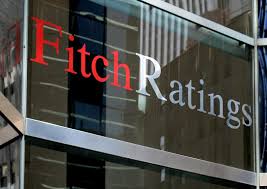"The affirmation of the Long-Term IDRs and Support Rating Floors (SRFs) reflects Fitch's view of a high propensity of the Kazakhstani authorities to support the institutions, in case of need, due to: 100% ultimate (although indirect) state ownership," reads the report.
"DBK and HCSBK are rated one notch below the sovereign's 'BBB' rating primarily due to (i) indirect state ownership through JSC National Management Holding Baiterek (BBB/Stable), giving rise to a moderate risk of delays with receipt and pass-through of sovereign support, as Baiterek's own financial resources are limited; (ii) somewhat limited government supervision of both banks, as no government officials sit on their boards of directors, and DBK is exempt from regulatory oversight by the National Bank of Kazakhstan; and (iii) the moderate risk that the sovereign could cease providing full support to all quasi-sovereign entities before defaulting on its own obligations in a severe stress scenario," reads the report.
KAF is rated two notches below the sovereign mainly due to Fitch's view of its somewhat lower importance for the country's economy and financial system compared with DBK and HCSBK. The Negative Outlook on KAF's ratings reflects the fact that there are announced plans to privatise a controlling stake in KAF by end-2020. Although selling a stake at book value to an investment-grade rated buyer, as required by the privatisation plan, may be difficult, a sale to some local quasi-sovereign fund or another entity is not inconceivable, which may result in some weakening of the state support propensity.
HCSBK is unlikely to need extraordinary support in the medium term in light of resilient asset quality (0.3% non-performing loan ratio) and a strong capital buffer, as reflected in a Fitch Core Capital (FCC) ratio of 57% at end-2017. The comfortable liquidity cushion (38% of total assets at end-2017) is currently sufficient to meet the bank's contingent liability for future mortgage issuance up to end-2021.
KAF is less likely to need additional solvency support in the medium term due to a high capital buffer (36% equity-to-assets ratio of at end-2017) relative to unreserved problems, focus on higher-quality lease issuance and modest growth. NPLs and restructured exposures of a mostly legacy nature (15% and 12% of gross exposures at end-2017, respectively) were 43% covered by reserves. If total problematic exposures were fully provisioned, the equity-to-assets ratio would still be a solid 22%. Given the moderate planned growth of 10% in the next three years capital pressure could only stem from some broader deterioration of the agricultural sector, which is cyclical by nature.
Photo source: picture from an open source
